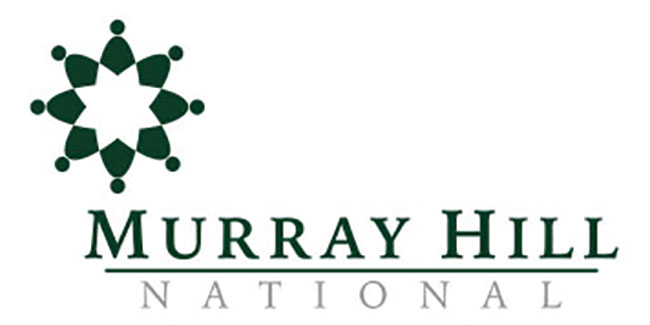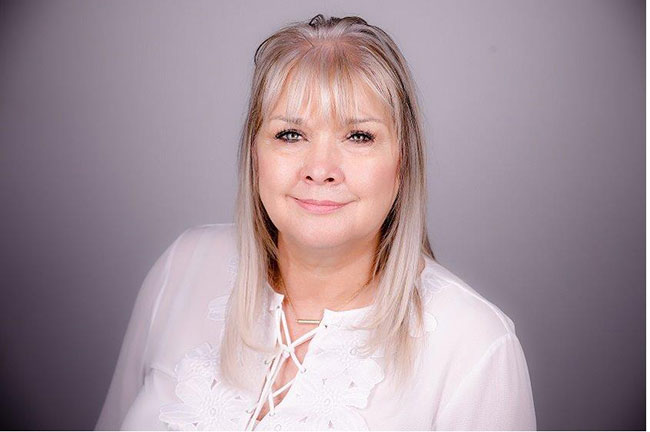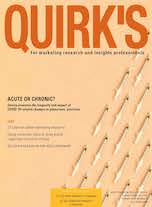SPONSORED CONTENT
 Susan Owens President and Owner, Murray Hill National
Susan Owens President and Owner, Murray Hill National
With 2020 in the rearview mirror, businesses and consumers alike are still grappling with the effects of the past year and trying to understand what 2021 might have in store. To better understand the state of recruiting in 2021, Quirk’s spoke with Susan Owens in November 2020 to learn how Murray Hill National rose to the challenges presented by the past year and how they continued to ensure quality recruiting despite the unpredictability that 2020 offered.

What are the challenges right now with recruiting?
Right now, everything is pretty much online and we’re not doing a lot of in-facility work. At first the online work was more challenging but it’s become easier as the technology piece has clicked for respondents – they’re more used to the Zoom meetings so now it’s a matter of getting them to connect and remember to be on the same device, as well as trying to get them to dress properly and occupy their kids and pets while they’re participating. Toward the beginning of the pandemic, the real challenge was just the transition of the technology piece and now it’s more just helping respondents maintain the right environment during the research.
One silver lining within this mess is that we were able to transition so quickly and shift gears so fast. Plus, our whole team – all the recruiters, the project managers, everyone – we’ve really become experts in this new mode of working and recruiting.
Is there anything in particular that’s been helpful in terms of helping respondents adapt?
We make sure to connect with respondents early on and have a recruiter go over the details with them during the initial recruitment. Afterwards, we’ll follow up with a detailed confirmation letter. Finally, we’ll call respondents before their session. For in-facility work, we always made a call 24 hours beforehand, but with online work we’re calling an hour before. So we’ve shifted our practices there and this has helped.
Do you see these adaptations as being useful as well as permanent in the long term?
Coming from the qual world, it can be a bit disappointing when we have all these facilities available and we’re used to doing in-facility work. But the bottom line is that this new mode of work isn’t going away. Prior to the pandemic, we would see some in-facility work followed by telephone interviews, and though telephone interviews are likely going to become obsolete eventually, we’ll still keep these for certain projects. For example, we’re currently running a project with kidney disease patients and while it’s nice to have respondents be tech-savvy and using webcams, this isn’t necessarily feasible when people are so sick, so we’re defaulting to standard telephone interviews because that is what is comfortable and easy to use for the respondents. I don’t think the video is ever going to go away. It’s a wonderful way to conduct face-to-face and we can invite the clients through videostreaming for convenience. Still, I have had a lot of moderators say that it’s not the same as in-person work and there’s still the issue of usability and touch and feel. So, the in-facility work will come back but I have a feeling it’s going to be slim in comparison to what it was.
What has changed with the respondents themselves in terms of show rates, enthusiasm and the general respondent experience?
Respondents have been very easy to work with. At the onset of the pandemic, respondents were much easier to reach due to the number of people not at work and they were more interested in the research as well. Show rates have been great, with both online research and in-facility work. We also haven’t experienced many people saying that they just won’t do the research. Show rates are still holding steady, but as people have gone back to work and school, we’ve had to be more restricted with timing to work around their schedules, whereas early on we could have morning and afternoon groups without conflict.
Overall, the respondent experience hasn’t changed in terms of our work. We’re offering incentives as if they were coming to the facility, so once facility work has picked up speed again incentive amounts will likely increase for in-person. The real change has been in how we execute or host the research.
Once the pandemic has passed, do you see any additional challenges for recruiting?
Once we get back to more in-facility work, our main concern will be with how we execute everything. We’re still going to have to be careful to make sure everything is clean and sanitized and that proper social distancing is happening. We just don’t know how the pandemic will continue to play out and even after we’re headed in a positive direction we’re all still going to be in the mental mode of needing to be careful and protecting ourselves. As we conduct more in-person work, there are going to be cancellations as people navigate their own comfort and safety with uncertain times. But no, I don’t see long-term challenges for recruiting post-pandemic. Even with the in-facility work that we’ve done so far, we’ve had 100% show rates among patient, consumer and health care sectors.
Where do you see the need for recruiting right now?
All sectors are fairly busy – consumer, B2B and health care. There was a dip for a few months in May, June and into July, where the numbers were down. However, we were still transitioning our workflow, so as the rates picked up again we’d already learned the process for recruiting during this time and how to guide respondents through it, meaning we were prepared to handle the increase in work later on.
Along with old and new challenges, how does Murray Hill ensure quality?
We have a specific process that we follow and our project managers know to not deviate from that process. The process doesn’t change no matter what kind of research we’re doing – it stays the same to make it valid. So, when we get a new project, a project manager prepares and trains the recruiters. We also program a prequalification survey to send to respondents. As an example, let’s say we’re looking for moms with babies in Size 3 diapers. We’ll pull from our database of moms with kids in a certain age category and then we’ll reach out via e-mail with a few short questions. Once we get those results, our recruiters first call those people who we think might be really qualified. On the back end, we’ll have another set of respondents that are already on the phone. Let’s say we don’t have their e-mail address or we don’t know if they have kids but they’re 25 years old and married, so we’ll reach out to these people as well. We get a pen-and-paper screener on them and that goes back to the project manager from the recruiter. Once we’ve ensured accuracy and quality, a confirmation letter is sent to the respondents immediately. It’s important that we contact respondents right away so they don’t experience a gap in communication, so within 24-36 hours we’ll send a confirmation letter out. We then update the client so they can see who we’ve recruited. As we’re nearing the time for the study, the project manager rescreens the respondents to make sure the recruiter did a good job and that the respondents have not changed their answers. And then we’ll make a reminder call to the respondent – an hour before if it’s a video interview and 24 hours before if they’re coming to the facility for in-person. So, we follow a strict process with everything we do; this includes phone-to-web work like CATI/CAPI/PAPI and old-fashioned CATI work.
What sets Murray Hill National apart from other recruiters?
First and foremost – we’re national. Our vice presidents, project team and recruiters are highly experienced and have a lot of longevity with the company. We follow a strict process and, in order to ensure quality results, we don’t deviate from it. As the pandemic has highlighted, we have the ability to shift work from the office to at-home quickly so that regardless of the circumstances we can stay on track. Additionally, we can recruit all audiences such as consumers, B2B and health care, including patients. These qualities combined set us apart from other recruiters.
The core of this business is recruiting – all methodologies and all audience types. At Murray Hill, something that we’ve become experts at is product placement. For this work, the client sends the product to our offices and we have an assembly line where we package the product and send it back out. If there’s a need for us to get the unused or used product back, we include a self-addressed box with the product when we ship it out and then the participants can return it to us. We can handle all facets of the process for clients – we screen and qualify the participants and we also take care of the shipping and return of the product.
